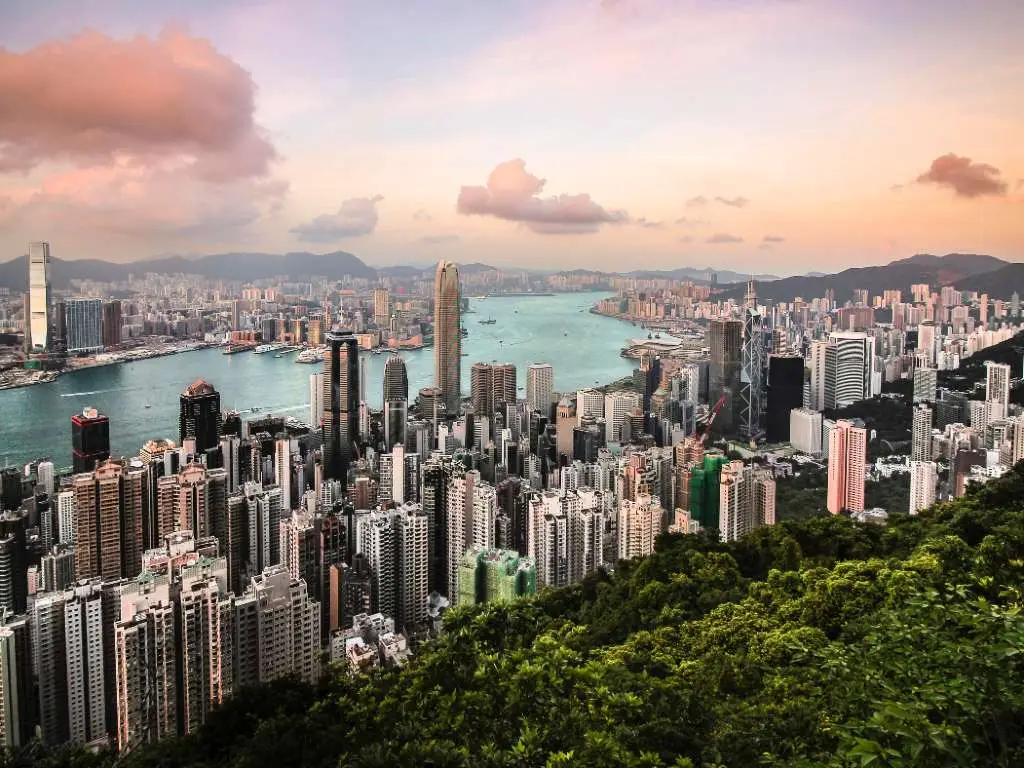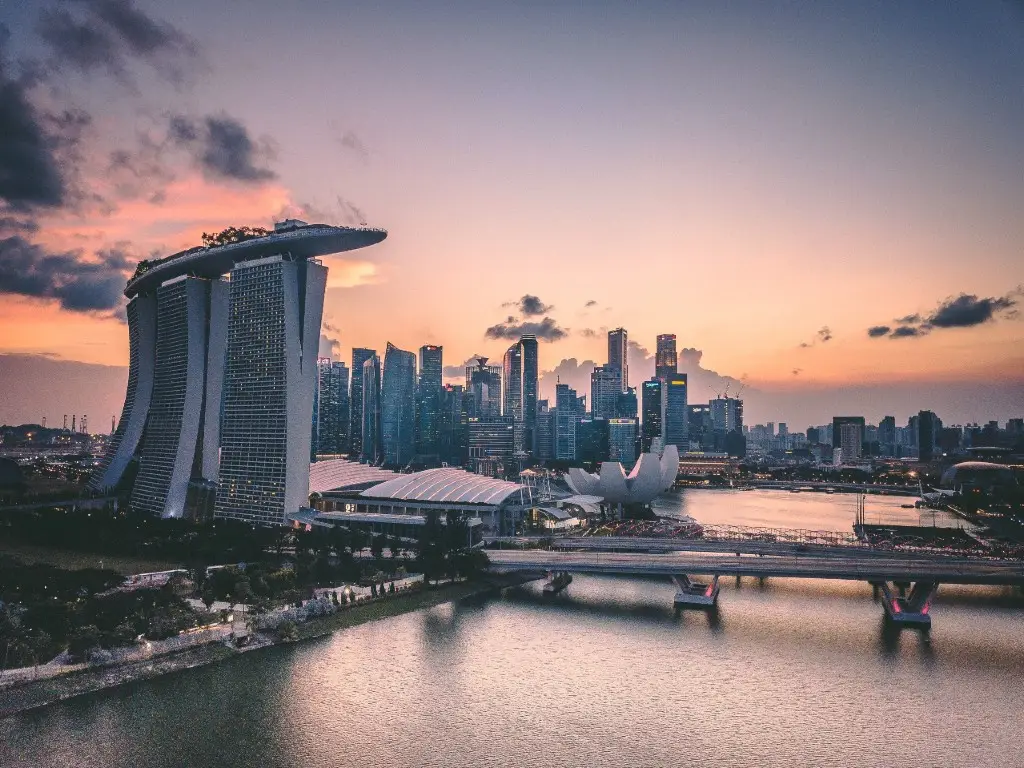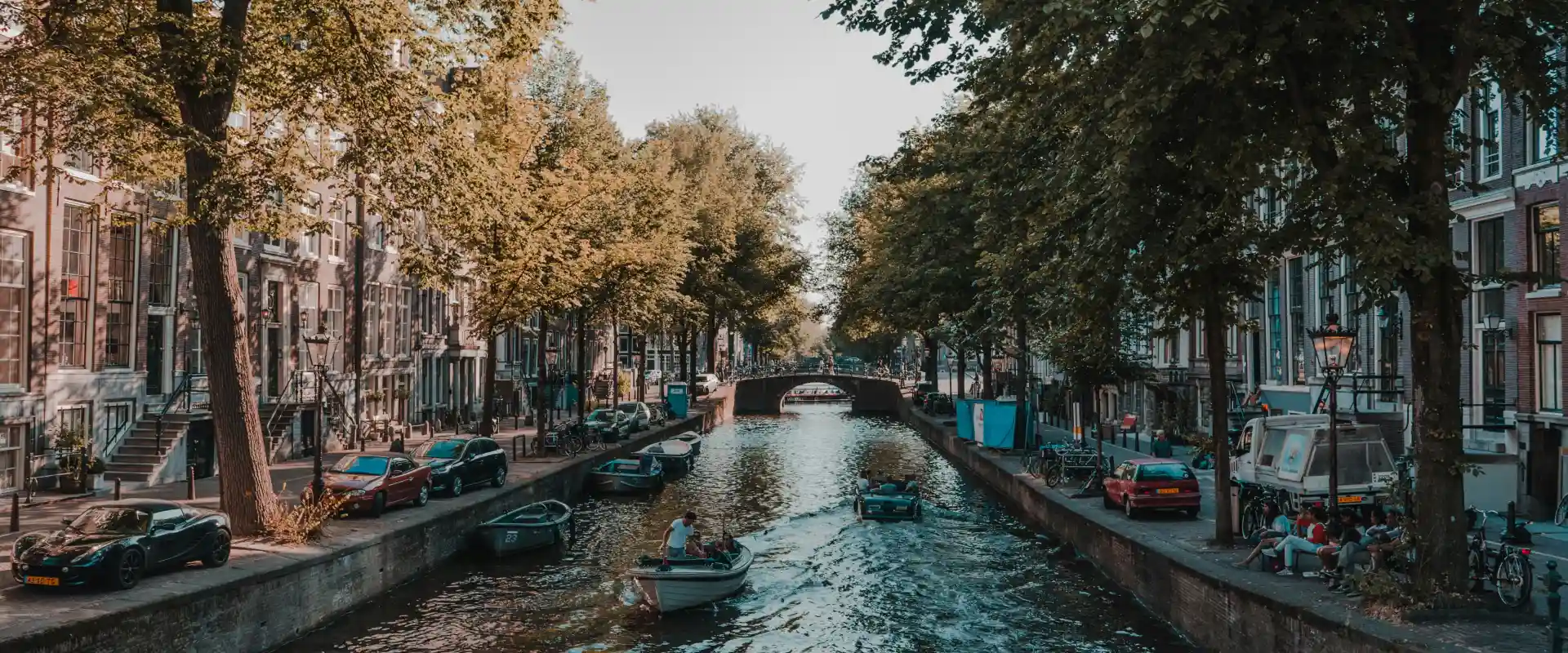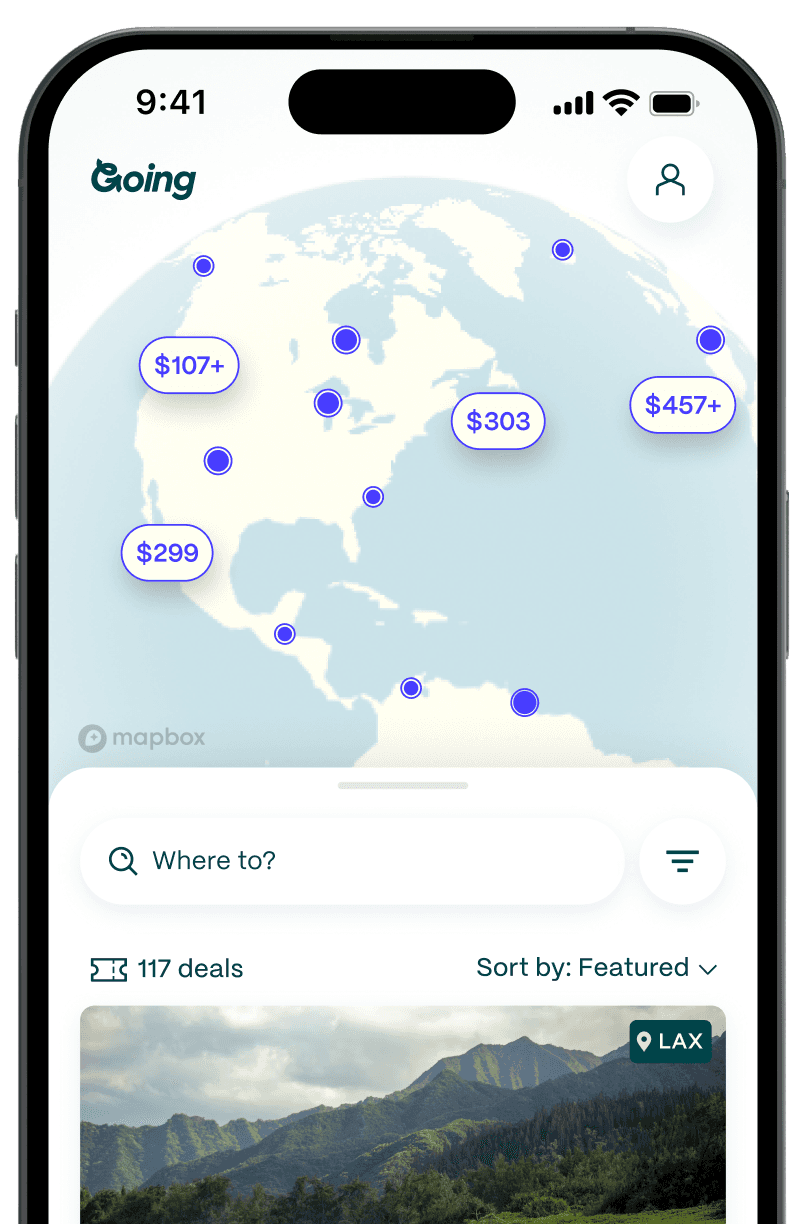
Your Hong Kong Layover: Temples, Neon Lights & Dumplings (5–24 Hours)
Table of Contents
Key takeaways
- Hong Kong blends Chinese and British culture with a unique mix of traditional Taoist shrines and modern skyscrapers, offering diverse experiences like Michelin-star dining, bustling markets, and scenic views of Victoria Harbour.
- The city has a compact layout with easy-to-navigate public transport, including the MTR subway, trams, and Star Ferry, making it convenient for both short and extended stopovers.
- A layover of 6+ hours allows exploration of Hong Kong's highlights like The Peak, Victoria Harbour, and renowned dim sum restaurants, while a longer layover offers more options, such as visiting outlying islands or enjoying rooftop bars.
- Hong Kong is an expensive destination with high accommodation and dining costs. It’s best visited in the cooler months (October to March) to avoid the summer heat and typhoon season.
- With Going membership plans, you can get real-time flight hacks as soon as prices drop for domestic and international flights, even ones that route through Hong Kong. That way, you know you're getting the some of the cheapest flights every time.
As one of the world’s most vibrant cities, Hong Kong is perfect for a stopover. Spend a few hours or days here, and you’ll be itching to see more. The city spent roughly 150 years as a British colony and has a unique mix of Chinese and British culture and a contrast of traditional and modern: Taoist shrines sit beside cloud-piercing skyscrapers, dried seafood markets next to chic restaurants, massive shopping malls brush elbows with cobbled alleyways.
Hong Kong is also compact and easy to navigate, with several affordable public transportation options including the hyper-efficient MTR subway system, century-old Star Ferry and nostalgic tram. For most travelers, the highlight is Victoria Harbour, flanked on either side by rows and rows of soaring glass towers, while leafy mountains hover in the distance.
Whether you’re hoping to explore the mountains, markets or Michelin-starred restaurants, Hong Kong has a little bit of everything—and then some.
- VISA REQUIRED: No
- MINIMUM CONNECTION TIME: 1 hr
- MINIMUM TIME TO LEAVE THE AIRPORT: 6hrs
Visa info for Hong Kong
For stays of up to 90 days, travelers with US passports don’t need a visa to visit regardless of whether they are visiting for leisure or work.
Minimum layover times in Hong Kong
For a connecting flight: 45 mins–1 hour
All connecting flights through Hong Kong International Airport (HKIA) are considered international—even those to mainland China, since the city is a Special Administrative Region (SAR) of the People’s Republic of China. Hong Kong follows a “One Country, Two Systems” policy with its own currency, passports, legal system, and civil aviation authority, among other differences.
Transit through the airport is easy if you’re already checked in with a printed or mobile boarding pass in hand. Once you arrive at HKIA, simply follow the directions for transit passengers. Signs are well-marked in both Chinese and English, and staff members have proficient language skills, so there should be no communication issues. You will need to go through security before the next leg of your trip, but lines are extremely efficient. Give yourself 45 minutes to one hour to make the connection without stress.
Without a boarding pass, transit will take a little longer. Once you land, find your airline’s transfer desk via the airport’s screens (or alternatively, check it here), and collect your boarding pass. Then follow the signs to your gate, screening, and done. The whole thing should take about 1–1.5 hours, though we’d recommend budgeting more time if you’re traveling during a busy holiday period, such as Christmas or Chinese New Year.
Flights don’t have to break the bank! Discover smart strategies on how to find the best flight deals and book at the lowest prices.
To leave the Hong Kong airport and explore for part of the day: 6 hours+
As long as you have at least 6.5 hours to spare, we’d recommend heading downtown for the city’s highlight reel. That gives you 30-45 minutes for the journey to and from the airport, two hours to explore, then two hours before check-in.
- 30-45 mins to deplane and go through immigration and customs
- 30-45 mins to transit to downtown
- 2 hours to explore
- 30-45 mins to return to airport
- 2 hours to go back through security, get to your gate, and board the plane
If you’d prefer a slower-paced day out, simply stay on Lantau Island where the airport is located. With at least five hours, you could visit the traditional fishing village of Tai O, head to the beach in Pui O, or enjoy lunch on the waterfront in Mui O.

Getting from the Hong Kong airport to the city center
- TRAIN: 24 mins
- BUS: 60-90 mins
- TAXI/UBER: 25-60 mins
Taxis to Hong Kong island run between $45 to $60 one-way and can take anywhere from 25 minutes to an hour to reach Central, depending on traffic. Skip the taxi lines and take the Airport Express instead. You’ll reach Central in 24 minutes, plus enjoy free Wi-Fi on the way.
A same-day return ticket on the Airport Express Train costs around $15 per person, with trains running every 10-15 minutes from 5:54am to 12:48am. You can catch the Airport Express back to the airport at three stations: Hong Kong (Central), Kowloon, or Tsing Yi. This is also the best train to take if you’re heading to Hong Kong Disneyland or the AsiaWorld-Expo, where many conferences and concerts are held.
Buses are the cheapest but slowest option, costing around $4-5 per journey. The journey will take about 60–90 minutes to Central and drivers only accept cash (and don't expect change) or Octopus cards (Hong Kong’s reusable stored value card). More info can be found here.
How to spend a short layover at the Hong Kong airport
Often ranked amongst the top airports in the world, Hong Kong International Airport (HKG) sets the bar pretty high. The two terminals are airy and clean, plus there’s unlimited Wi-Fi, plenty of seating and countless charging points, so you can easily plop down and catch up on emails or watch a movie if that’s your thing.
The international hub recently emerged from a facelift, which is still underway in some areas, that not only upgraded the facilities but also the shops, restaurants and dining areas. Run-of-the-mill fast-food chains have since been replaced with trendy, high-quality establishments.
One of the highlights is Duddell’s, an outpost of the Michelin-starred venue in Central, where you can enjoy an extensive Cantonese menu of dim sum, barbecued meats, and grab-and-go bento boxes. In addition to local Cantonese cuisine, you can sate your ramen cravings at Bari-Uma, dig into burgers and craft beer at Beef & Liberty, or re-caffeinate with artisanal coffee at Karavanstop.
Retail-wise, you’ll find expansive duty-free stores and all the usual international brands, right alongside Homeless (a local Hong Kong design store) and the world’s first Monocle travel retail store—it’s worth a browse just for the magazines, hipster travel gear, and notebooks. The fun continues with a Wellness Spa & Salon, UA IMAX Theatre, an indoor golf simulator, an Aviation Discovery Centre, where you can learn about Hong Kong’s history of aviation via interactive exhibitions and a cockpit simulator. There's also several lounges including an American Express Centurion Lounge.
Some of the best deals happen by accident! Discover mistake fares and save big on airfare.
How to spend a short Hong Kong layover outside the airport
First-time visitors usually expect a futuristic mix of New York-meets-Blade Runner. The city certainly delivers on its fast-paced reputation: Towering skyscrapers and impossibly slender buildings soar skyward, creating urban canyons and endlessly photogenic alleyways.
Of course, there’s more to Hong Kong than its stunning collection of skyscrapers. To get the lay of the land, start by visiting The Peak where you will see straight across the city’s glittering water, green mountains and impossibly dense jungle of towers.
Next, take the Peak Tram down to Admiralty where you can hop aboard a ding ding, the city’s historic trams (nicknamed the ‘ding ding’ for the sound it makes) where you’ll want to snag a seat on the top deck for the best views. Hop off in Central so you can stroll west into Soho until you reach Tai Kwun, a recently opened center for arts and heritage. As the former Central Police Station, the restored 20th-century complex is a beautiful example of colonial-era architecture—not to mention full of local shops, restaurants and art galleries.
Walk down to the Central Harbourfront, then take a short ride on the Star Ferry for a front-row seat to Victoria Harbour. These white-and-green boats have been crossing Victoria Harbour for over a hundred years, plus they are a super relaxing way to see the city. Once you land in Tsim Sha Tsui, walk along the promenade east along the newly renovated Avenue of Stars, stopping at the Hong Kong Museum of Art.
And then, of course, eat! Hong Kong is one of the world’s best food cities, especially when it comes to dim sum. In Tsim Sha Tsui, splurge at Hutong for excellent dim sum and harbor views, or go for cheap and cheerful at Sun Tung Lok. Back across the water in Central, stalwart Maxim’s Palace has a reputation as one of the best dim sum restaurants in town. More local Cantonese cuisine can be found pretty much anywhere else in the city—just follow the lines of Hong Kongers to pick your restaurant.

How to spend an overnight layover in Hong Kong
An overnight layover or even just a longer layover in Hong Kong will give you more opportunities to keep eating and exploring. If you have 24 hours in Hong Kong, Take the MTR up to Sham Shui Po or Yau Ma Tei, two of the city’s most traditional neighborhoods. Grab a bite, take a stroll, and watch everyday Hong Kong life up close.
With more than 260 islands around the territory, another way to experience Hong Kong is by visiting an island. Take a ferry to one of the smaller outlying islands, like Lamma or Cheung Chau, where you can eat seafood by the water, go hiking, visit ancient Taoist temples or chill on the beach.
Booking a hotel with harbor views is always a good idea, though be warned Hong Kong accommodations are pricey. For those looking for a relative bargain, look in neighborhoods such as Mong Kok, Jordan, Sham Shui Po or North Point. If you prefer to stay in the center of things, stick to Central, Sheung Wan, Wan Chai or Tsim Sha Tsui.
When it comes to nightlife, a longer Hong Kong layover calls for a drink at one of the city’s many rooftop bars. Choose between more upscale venues, like Wooloomooloo, Alto or SEVVA or relax at a casual, alfresco spot like Beer Bay, atop the Discovery Bay Ferry Pier, in Central.
Need to Know
- CURRENCY: Hong Kong Dollar
- LANGUAGES: Cantonese and English
- SAFETY: B
- COST: $$$$ (out of $$$$$)
- BEST TIME TO GO: Oct–Mar
Currency in Hong Kong
The local currency is the Hong Kong Dollar. Get cash from ATMs or exchange money at one of the many money exchange operators at the airport or around Central. Cash is used frequently in buses, taxis, and markets so make sure to have some with you at all times.
Cost in Hong Kong
While things like transport and hole-in-the-wall establishments are pretty affordable, Hong Kong’s hotels, restaurants, and bars are amongst the most expensive in the world. An average meal—and we mean average—with a glass of wine can easily cost $40–50 per person.
Cocktails are usually at least $13 and up. And that doesn’t include the service charge, which is usually 10% and bundled into your bill. You can leave more, but it’s not expected. A hotel like the Travelodge in Sheung Wan starts at $50 per night, while swanky five-star hotels in town—such as The Rosewood, The Peninsula, or The Upper House—will cost $300 minimum.
Get more for your money—check out how to save money on flights and travel smarter.
Weather & Best Time to Go to Hong Kong
Hong Kong can get very hot and humid in the late spring and summer (usually from April to September), which also tends to be peak typhoon season. We’d recommend visiting in autumn or winter (October to March) when it’s much drier and more comfortable. Our favorite season is fall, when the sky tends to be clear and sunny but not too hot.
Safety in Hong Kong
Hong Kong is relatively safe, with low crime rates and a good healthcare system. Since June 2019, pro-democracy protests have been shaking up the city but the unrest doesn’t usually affect visitors. That said, the situation can change quickly—some demonstrations escalate dramatically in just a few hours—so you should stay vigilant, and regularly check local news sources such as the SCMP. We’d also advise keeping an eye on the US State Department’s website for travel advisories.

Transport in Hong Kong
The MTR is the fastest and cheapest way to get around. If you have a longer layover, it’s worth picking up an Octopus card at the airport, MTR station or any convenience store. These are available for an HK$50 (around $6.50) deposit, which you’ll get back when the card’s returned. Once you load up the card, you can use it to pay for purchases on public transport, at 7-Elevens and even in some cafes. Taxis and Ubers are also plentiful.
Food & Drink in Hong Kong
Food is serious business in Hong Kong. The city has thousands of restaurants and almost as many cuisines, from classic Cantonese to Indian, Sri Lankan, Indonesian, Vietnamese, Thai, and lots of western options. To eat like a local, be sure to dine at one of the city’s few remaining dai pai dongs, family-run outdoor eateries that have been around for generations, or a retro-styled cha chaan teng diner.
Dim sum should obviously be on your must-do list. Try trendy frill-free Dim Sum Square, trendy Yum Cha, traditional Maxim’s Palace, or luxurious Duddell’s—depending on your mood and budget.
For drinking and general revelry, Soho is your spot. Hundreds of bars dot this hilly neighborhood, which gets packed with expatriates and locals alike pretty much every night of the week. Head to Coa for mezcal and tequila-based libations, the Quinary for excellent twists on the classics, and Shady Acres for inexpensive wine and excellent bar food.
Language
Cantonese and English are both official languages. Both are spoken widely at larger shops and international restaurants, though more local cafes and markets may only have Cantonese speaking staff.
Don’t miss
Hong Kong’s skyline of buildings and mountains is unlike anything you’ve ever seen. But to get a real sense of everyday life in Hong Kong, nothing beats a leisurely stroll through a slow-paced neighborhood, such as Tai Ping Shan in Sheung Wan, where cool cafes, vintage shops, traditional tea shops and local fashion boutiques showcase another side of the city.
Don’t bother
Hong Kong brims with shiny, crowded mega-malls. While their air-conditioning makes them pretty enticing places if your layover happens to be during the height of summer, we’d suggest skipping them altogether though: almost identical, they rarely offer anything unique to Hong Kong. Instead, shop at local boutiques in renovated heritage complexes like Tai Kwun or PMQ, or get lost in a ‘micro mall’ like the Island Beverly Center in Causeway Bay.
Read our tips for booking a flight with a long layover or learn about budget airline options in Asia.
See Going's deals on flights to Hong Kong, and join today to get cheap flights from all over the world delivered right to your inbox.
Frequently asked questions
Do you need a visa for a Hong Kong layover?
How should you spend 10–15 hours in Hong Kong airport?
Do I need to go through immigration for a connecting flight in Hong Kong?
Last updated November 5, 2025









